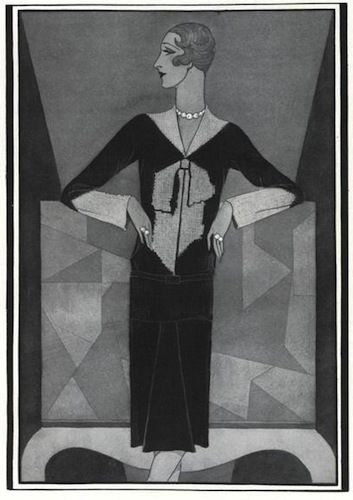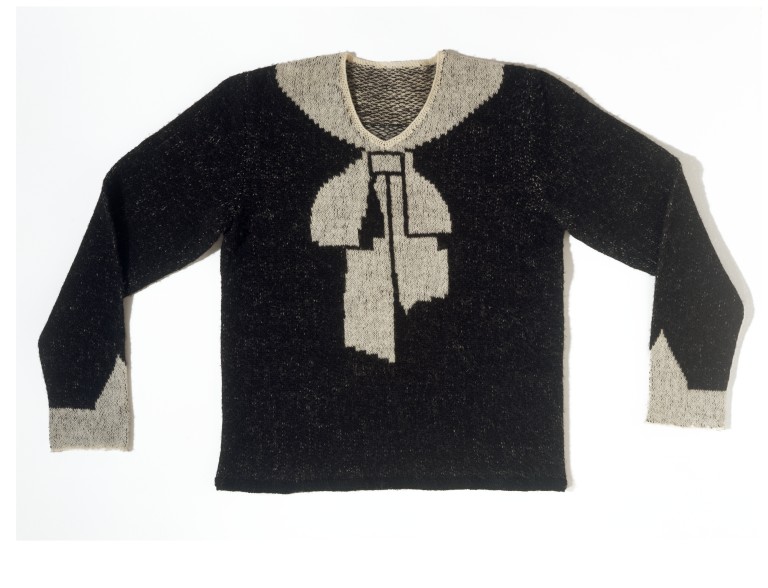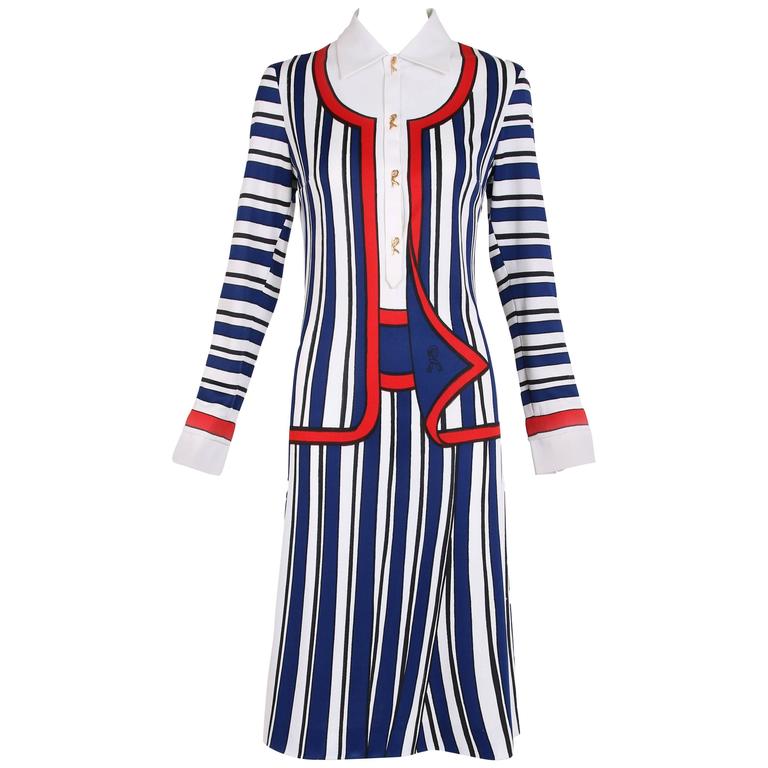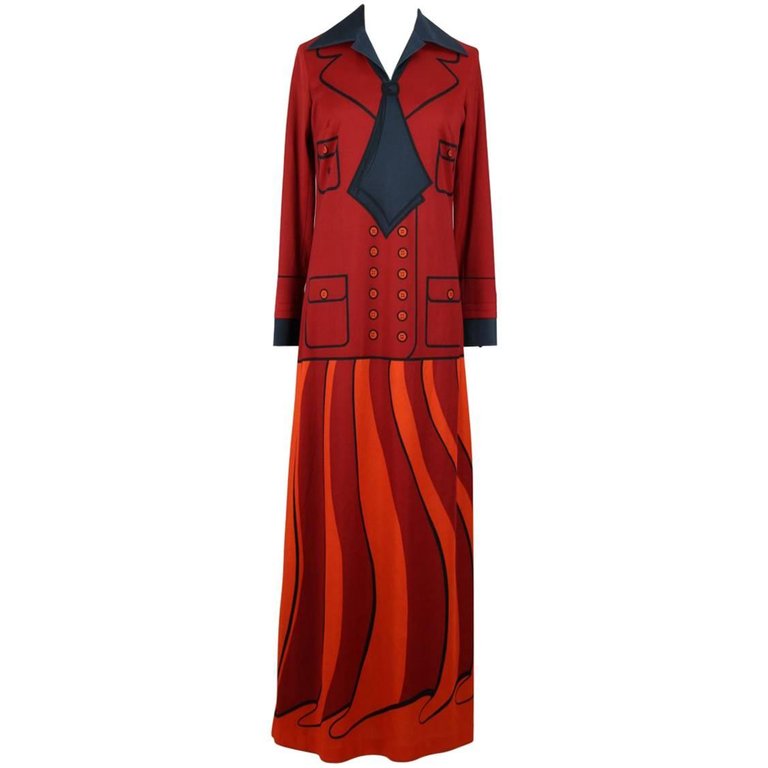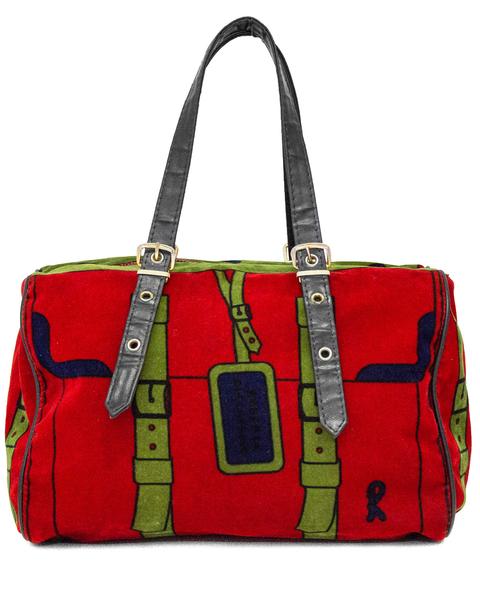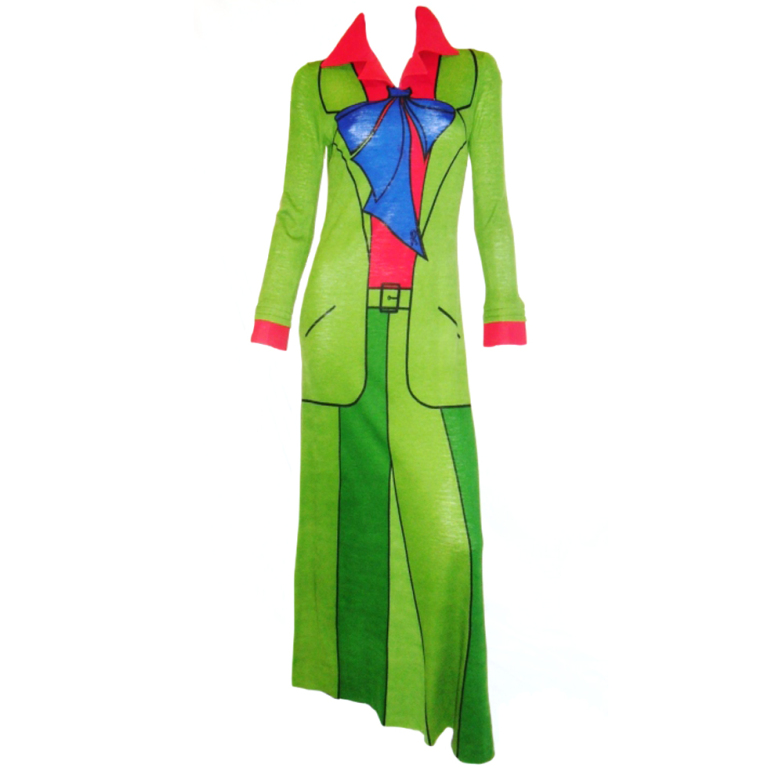What is surrealist fashion?
Surrealism was an artistic movement that took place in the 20th century that eschewed a rationalistic view of human experience in favour of one that exploited the subconscious for creative potential. Often, this manifested in surrealist art by the unusual arrangement of objects in a single image (one of the more well known examples would be Dali’s dripping clocks.)
Surrealism in fashion does the same: garments become object(s) that, by simple virtue of their display on the human form, are removed from their original context and take on a more fantastical or bizarre look.
When we talk about surrealist fashion, the subconscious origins of the movement are replaced by a more simplistic understanding of the term in which the perceived limits of what we understand to be clothing are challenged through unusual design elements and parody.
How did surrealism first seep into fashion?
Rather than being directly influenced by surrealist art, I would argue that surrealism in fashion had it’s beginnings rooted in capitalism. Beauty companies in the early 20th century soon realised that an element of novelty would accelerate sales and began to explore unusual ways of presenting their various lotions and powders.
Cherignan, “Histoire des Fleurs”, ca. 1930s
A literal collaboration between the cosmetics industry and the art world was the telephone dial compact, designed by Dali for Schiaparelli in 1935.
Because the dressing table was the ‘shelfie’ of it’s time it acted not only as a station for preening but also as a display of good taste and wealth. Perfume bottles doubled as decorative ornaments and exotic gifts. The vessel became as important as the product within. Companies played with the miniature sizes of these products, and with optical illusions to turn them into other objects.
Les Parfums de Marcy “Le Collier Miraculeux”.
As designers exhausted the possibilities for challenging new silhouettes, fabrics and accessories throughout the 20th century, an appetite for some of the humour and surrealism present in the cosmetics industry began to cross-pollinate and manifest on the catwalks…
Who Are Some Famous Surrealist Fashion Designers?
Hussein Chalayan
Chalayan is one of the few fashion designers considered to be heavily conceptual rather than commercial. His garments and the presentation of his collections straddle the spheres of fine art, theatre and even furniture design. Catwalk shows become unconventional performances with the addition of props such as trampolines. He cites influences as obscure as science fiction and genetic anthropology, so it is easy to understand how his creations quickly become hyperbolic. His work is surreal insofar as it challenges the conventions of the catwalk and the role of the human body as it interacts with clothing.
Martin Margiela
Margiela, again, is often considered highly conceptual in his approach to clothing. This means that the idea of the garment is as, if not more, important than the piece itself. Margiela often comments on the process of garment design and the branding circus that surrounds it, and in this way he is often a parodist of fashion.
The press has labelled him a ‘deconstructor’ for this reason: he deconstructs the materials, components and processes of fashion and in this way challenges the fashion system whilst simultaneously playing its game.
Maison Martin Margiela, Dress Form Bodice, 1997.
Moschino
Moschino has a a strong ethos of parody and humour which have ensured it’s popularity, particularly with younger consumers, for over 30 years.
Their catwalk presentations often seize upon social archetypes and distort them. From frantic housewives gossiping on the phone with their hair in rollers, to alien Jackie O’s with candy coloured skin in Stepford-wives skirt suits, they are stereotypes dragged into the uncanny valley where something isn’t quite human.
Backstage at Moschino RTW Fall 2018. Image Source.
Phillip Treacy
Milliner Treacy’s ship headpieces are ethereal and fairytale-like. By stretching the limits of his chosen medium of millinery, he introduces sculptural headpieces to the world of high fashion. The fact that his pieces perch on the head and naturally follow the movement of the wearer only add to the sense of performance - for example this Ship headdress against the blue lighting of the catwalk display appears to be gliding across the sea against a clear sky.
Model wearing Phillip Treacy' ‘Ship’ headpiece on the catwalk, 1994. Image source.
Schiaparelli
Schiaparelli is one of the original innovators of the fashion world, sharing her playful aesthetic in a sea of samey elegance in the 1930s. Her first garment was a trompe l’oeuil sweater (a style revisited in the 70s by Roberta di Camerino) in 1927 which sold out immediately.
Below: Roberta Di Camerino revisited this style of design extensively during the 1970s, taking advantage of new printing techniques to create bright and colourful outfits that appear cartoon-like, 2D drawings come to life on a human form.
Thierry Mugler
Mugler fluctuates between severe work-wear (power-suits and skirt sets in severe shades of cobalt blue or roal purple) and the fantastical. What these two extremes have in common is their structural integrity - the focus is on silhouette and form. His more fantastical collections of magical butterflies and dragonflies use feathers to create iridescent trains.
Yves Saint Laurent
Yves Saint Laurent created a series of collections that went a step beyond being inspired by the world of art: and simply transmuted it into a wearable form. His Lip Dress has echoes of Schiaparelli, where the mouth is used across the chest to become the focal point of an otherwise simplistic Little Black Dress.
Yves Saint Laurent Cocktail Dress, 2002.
The fashion house also delved into the artwork of pioneering cubist Georges Bracques for a spectacular collection where the models wore the angular motifs, jutting out at awkward angles from their person.
Yves Saint Laurent, 2002.
Saint Laurent himself summarises the magic of fashion as a medium capable of cultivating fantasy around imagery from a multitude of sources in the following quote
“I succeeded in becoming the magician who transforms… a mirror into a lake, glass into gems, ribbons into a forest, tulle into mist. The spells cast by the theatre seemed to me a more living and more luminous retreat than reality.”








